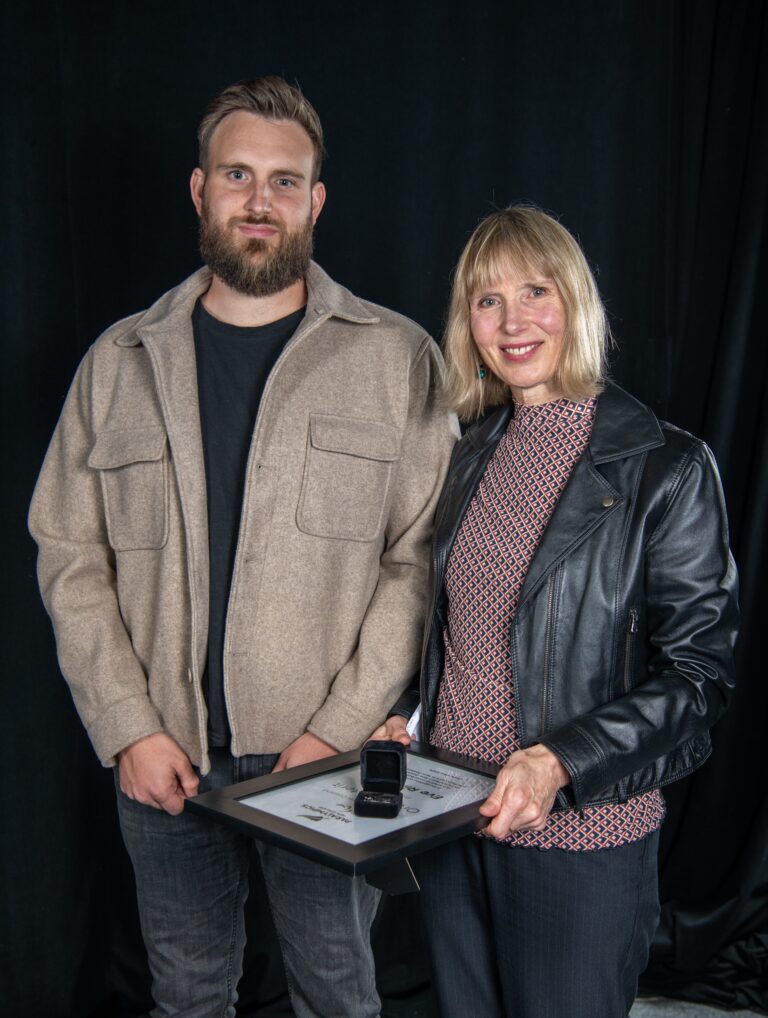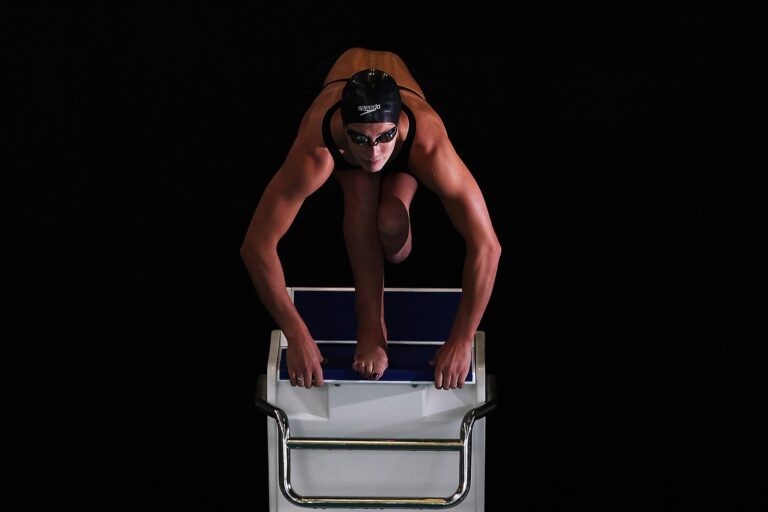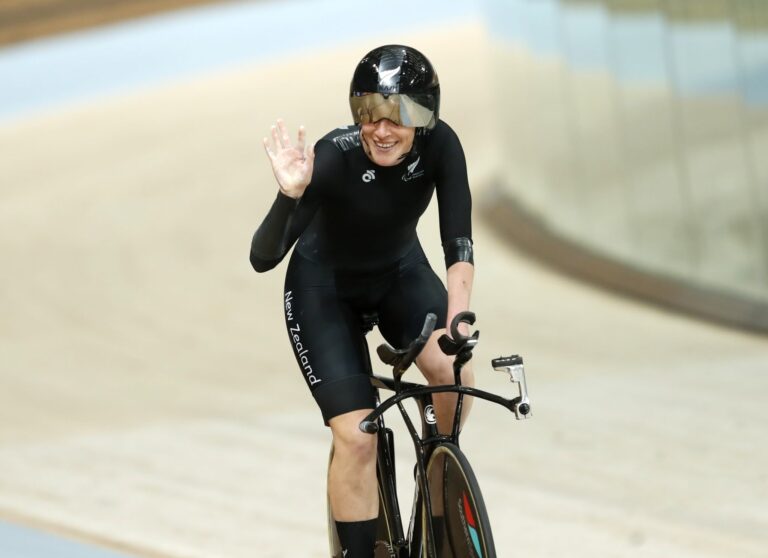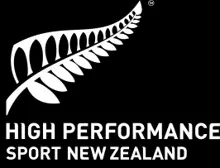One of the few times the late Duncan Laing’s wife Betty ever saw him get emotional was after Paralympian #81 Jenny Newstead won her first gold medal at the Barcelona 1992 Paralympic Games.
Laing was a legendary, old school coach in Dunedin who trained not only Newstead, but fellow swimming great Danyon Loader to Barcelona 1992 and Atlanta 1996. Olympian Loader had been in Laing’s squad since he was a young school lad, but the day Newstead first turned up at the side of Moana Pool was different.
Newstead was older, a university student from Palmerston North who had come down to study kinesiology and biomechanics. She’d been a gymnast and a runner, growing up (sprinting and hurdles in summer and cross country, road racing in the winter) and had competed in the Pan Pacific Championships in trampoline.
Then she had an accident on the trampoline in Australia, landing hard on the back of her neck. Three months later, she started getting symptoms her hands started curling up. “I had sympathetic dystrophy [a condition affecting the sympathetic nervous system] that moved through my spinal cord and eventually went to my legs. That created a motor condition that affected all four limbs and my breathing.“
Cut now to another pool, a physiotherapy pool, where she was ardently trying to prove a doctor wrong, having been told she wouldn’t be able to run or swim. Swimming was something she used to do as cross-training. It helps runners with their breathing. Now, it was weightless exercise that she felt she could still manage to do.
On the wall at the pool was a poster for the 1990 Games for Disabled in Whakatane, a new event organised by Eve Rimmer. “One of the adult swimmers there said to me, ‘You should go to these Games’“, Newstead recalls. “I pretty much laughed it off.“
But she eventually rang Rimmer, who encouraged her to attend. “So I went, with my dad, and tried several sports shotput, discus, swimming“. When people saw her swim, they told her she should get a coach and train to trial for the Paralympics. And that was how she came to turn up at Moana Pool, out of the blue, asking how to find a coach.
“Duncan Laing took my hand and said, ‘If you train hard enough, I’ll make you a champion’. He said that to all his swimmers. Then he said, ‘Come along at 7am and I’ll see if you’re any good’. And he made me shake his hand and commit to training really hard, and again told me he’d make me a champion. And he just chucked me into his training squad.“
With no power in her legs, Newstead was an “arms-only“ swimmer and at first had to train in the slow lane, but she kept her part of the bargain with her coach.
“We worked out a way to use a pool float for buoyancy at my ankles, so I could do 4-5 kilometres in a training session. Eventually I got faster and was selected to the New Zealand Paralympic Team for the Barcelona 1992 Paralympics. Danyon and I would share half a lane each in the squad lanes. But I used to duck under into the public lane when Danyon was doing his butterfly his arms were so wide that I used to have to dolphin dive under his arm! And I grew to love the technique of swimming, breaking it down and training. In some ways, it’s like choreography and I use a lot of what Laing taught me when I coach my own athletes today, in trampoline sport.“
Trampoline. Gymnastics. Dance performances, using crutches as creative tools. Oh, and performing in an aerial silks troupe, rising from her wheelchair to shimmy up silks suspended by crane nine metres above the Octagon’s chessboard at the Dunedin Fringe Festival a few years ago. There doesn’t seem to be much Newstead can’t do, if she puts her mind to it and breaks it down, works it out. Programme Director at Dunedin Trampoline Sports, she has coached both able-bodied and athletes with disability in all of those, too.
All this while hardly being able to walk on crutches at times, after she developed muscular dystrophy as well, the cause unknown. The problem was someone would always say she couldn’t physically do something. “I was always up for a challenge to prove people with disabilities can do anything. In 1990 I was angry at the world about having been told I couldn’t walk.“
For the benefit of anyone who wasn’t around in the mid-90s, we need to talk about why Newstead is a household name for those who were. It will be a mere précis of her dizzying achievements, but here goes. Ten Paralympic medals in Para swimming seven of them golds (the 200m medley, 100m freestyle, 50m freestyle and backstroke at the Barcelona 1992 Paralympics, and 100m backstroke, 100m breaststroke and 200m freestyle in the Atlanta 1996 Paralympics and this after having almost died of septacaemia in hospital in 1995, and then swimming through the pain of shoulder tendonitis that blew up during one of her medal events). Two gold and four silver medals at the 1994 IPC Swimming World Championships in Malta and 40 world records in her career, mainly in S5 events. Only once in 11 Paralympic finals did she finish out of the medals a super swimmer across disparate events. In her 50s, she got back into masters swimming, trampolining and tumbling.


She was made an MBE in 1993 which made Duncan Laing proud, the Arthur Lydiard of swim coaching, who had had to figure out how to train a Para swimmer with no power in her triceps and had her pegged early as someone who would go on to coach others.
“Teaching has always been my thing and he was a great mentor to me in that regard,“ reflects Newstead, who still lives in Dunedin with her husband and their Burmese and Devon Rex cats trained therapy cats that she used to help coach people with autism.
“I liked inspiring all people, and especially any children with a disability that I could encourage to take up sport. And now also in the performing arts, because I feel the arts are about 10 years behind sport in terms of perceptions of people with disabilities. The thing I like best about teaching and coaching is giving young people that message. Medals are only a bonus that comes with doing your best – believe in your own abilities and always try to do your best. I have always believed if you put your mind to something, you can do it.“
Story created by Margot Butcher for Storyation in partnership with Paralympics New Zealand.


